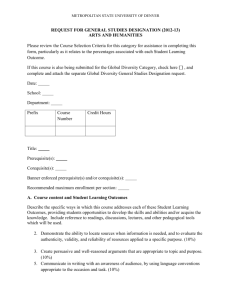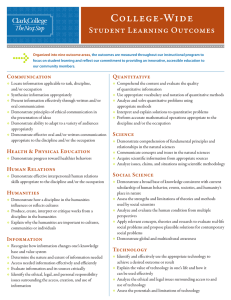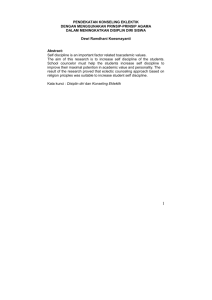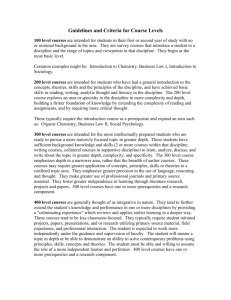Department: Communications, Humanities, and the Arts Discipline
advertisement
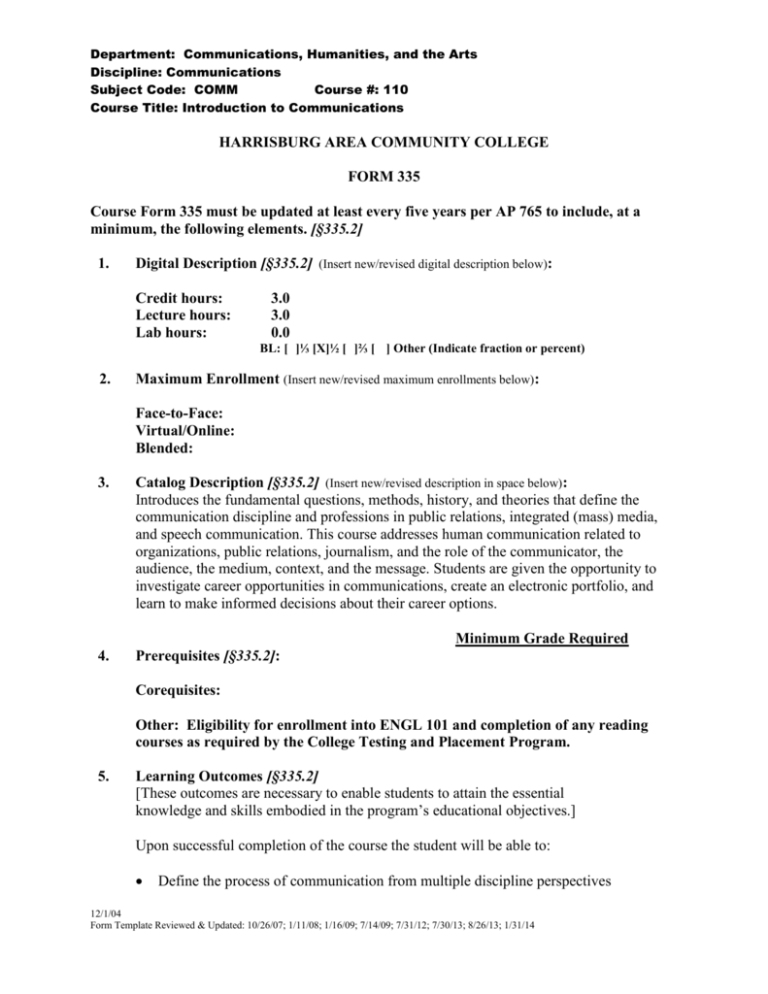
Department: Communications, Humanities, and the Arts Discipline: Communications Subject Code: COMM Course #: 110 Course Title: Introduction to Communications HARRISBURG AREA COMMUNITY COLLEGE FORM 335 Course Form 335 must be updated at least every five years per AP 765 to include, at a minimum, the following elements. [§335.2] 1. Digital Description [§335.2] (Insert new/revised digital description below): Credit hours: Lecture hours: Lab hours: 3.0 3.0 0.0 BL: [ ]⅓ [X]½ [ ]⅔ [ ] Other (Indicate fraction or percent) 2. Maximum Enrollment (Insert new/revised maximum enrollments below): Face-to-Face: Virtual/Online: Blended: 3. Catalog Description [§335.2] (Insert new/revised description in space below): Introduces the fundamental questions, methods, history, and theories that define the communication discipline and professions in public relations, integrated (mass) media, and speech communication. This course addresses human communication related to organizations, public relations, journalism, and the role of the communicator, the audience, the medium, context, and the message. Students are given the opportunity to investigate career opportunities in communications, create an electronic portfolio, and learn to make informed decisions about their career options. 4. Prerequisites [§335.2]: Minimum Grade Required Corequisites: Other: Eligibility for enrollment into ENGL 101 and completion of any reading courses as required by the College Testing and Placement Program. 5. Learning Outcomes [§335.2] [These outcomes are necessary to enable students to attain the essential knowledge and skills embodied in the program’s educational objectives.] Upon successful completion of the course the student will be able to: Define the process of communication from multiple discipline perspectives 12/1/04 Form Template Reviewed & Updated: 10/26/07; 1/11/08; 1/16/09; 7/14/09; 7/31/12; 7/30/13; 8/26/13; 1/31/14 Department: Communications, Humanities, and the Arts Discipline: Communications Subject Code: COMM Course #: 110 Course Title: Introduction to Communications 6. 7. Explain fundamental theories and topics of rhetorical, interpersonal, public relations, organizational and mass communication Apply critical thinking skills in the research, writing, and analysis of a communication event Recognize ethical issues in communication practices Discuss current communication issues being studied by communication professionals Create a personal electronic portfolio to use in reflective evaluation of individual learning experiences within the program Planned Sequence of Instruction [§335.2] [These must be designed to help students achieve the learning outcomes.] I. Overview of Communication a. What is Communication? b. Elements of Communication c. Nature of Communication d. Models of Communication II. Historical and Current Perspectives in the Field of Communication a. Breadth of the Communication Field b. How the Field Has Evolved c. Current Research in the Field of Communication d. Conducting Research in the Field of Communication III. Careers and Jobs in Communication a. Mass Media b. Public Relations c. Crisis Communication IV. Communication for the Workplace a. Communication for the Workplace b. Using technology in the workplace Assessment of Student Learning [§335.44] [Methods of assessment should be appropriate for Learning Outcomes listed above.] Assessment of student learning outcomes for the course, as required by AP 765, is part of regular curriculum maintenance and/or improvement. The specific plan has been determined by the pertinent faculty involved and is maintained in the College’s assessment management system. 8. List of Texts, References, Selected Library Resources or other Learning Materials (code each item based on instructional use) [§335.2]: C-Lecture/Laboratory, ALecture, B-Laboratory, LC-Lecture/Clinical, CLN-Clinical, I-Online, BL-Blended, D- 12/1/04 Form Template Reviewed & Updated: 10/26/07; 1/11/08; 1/16/09; 7/14/09; 7/31/12; 7/30/13; 8/26/13; 1/31/14 Department: Communications, Humanities, and the Arts Discipline: Communications Subject Code: COMM Course #: 110 Course Title: Introduction to Communications Independent Study, P-Private Lessons, E-Internship, F-Cooperative Work-Study, FEField Experience. [These resources must be easily accessible to students.] Berko, Roy M., Wolvin, Andrew D., Wolvin, Darlyn R., Aitken, John E.. Communicating, A Social, Career and Cultural Focus. (12th edition). Boston, MA. Pearson Kimball, Miles. The Web Portfolio Guide: Creating Electronic Portfolios for the Web. (latest edition). Longman Publishing. O’Hair, Dan, Weiman, Mary. Real Communication: An Introduction. (Second Edition). Boston, MA. Bedford, St. Martins. Rothwel, J. Dan. In the Company of Others: An Introduction to Communication (Fourth Edition). New York, New York: Oxford University Press. Trenholm, Sarah. Thinking Through Communication An Introductionto the Study of Human Communication, (Seventh Edition) Boston, MA: Pearson. Wood, Julia. Communication Mosaics: An Introduction to the Field of Communication. (latest edition) Wadsworth: Belmont, CA. 9. Prepared by Discipline Faculty Proponent: Laura Davis Date: 4/8/14 10. Approved by Department Chairperson: Date: 5/22/14 11. Approved by Associate Provost: Tim Dolin Date: 5/27/14 This course meets all reimbursement requirements of Chapter 335, subchapters A / B. This course was developed, approved, and offered in accordance with the policies, standards, guidelines, and practices established by the College. It is consistent with the college mission. If the course described here is a transfer course, it is comparable to similar courses generally accepted for transfer to accredited four-year colleges and universities. 12. Director, Curriculum Compliance: Erika Steenland Date: 5/27/14 13. Provost & VP, Academic Affairs: Cynthia A. Doherty, Ph.D. Date: 5/27/14 14. Original Date of course approval by the college: 201320 15. Date(s) of subsequent reviews [Indicate change: Learning Outcomes; textbook(s)]: Discipline Approved New Course: September 7, 2011 ck Revisions: Textbook Changes 3/1/2013 ck Revisions: Type of Instruction/Blended Ratio 12/1/2013 ck Revisions: Learning outcomes, Sequence of instruction, 4/8/2014 ck 12/1/04 Form Template Reviewed & Updated: 10/26/07; 1/11/08; 1/16/09; 7/14/09; 7/31/12; 7/30/13; 8/26/13; 1/31/14




